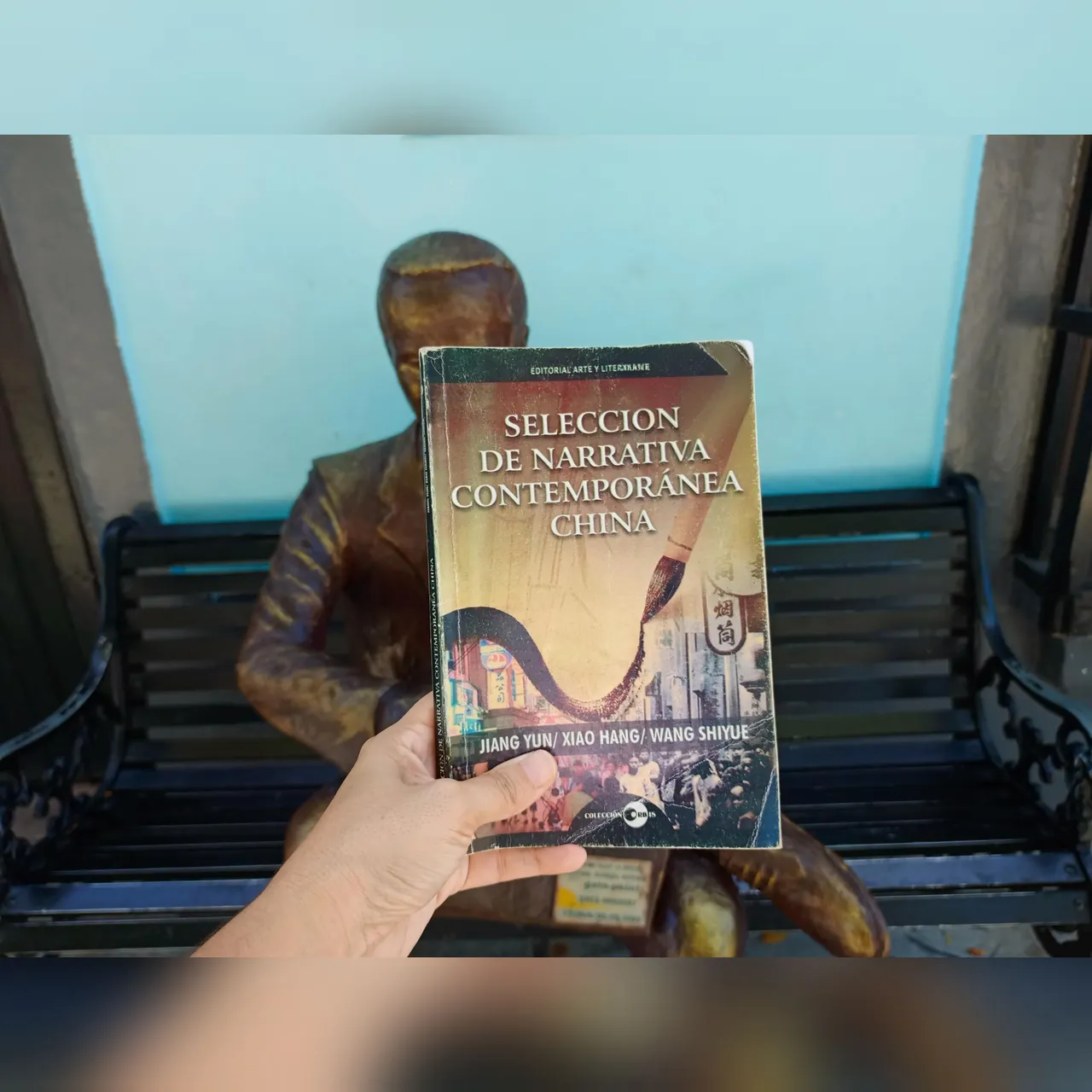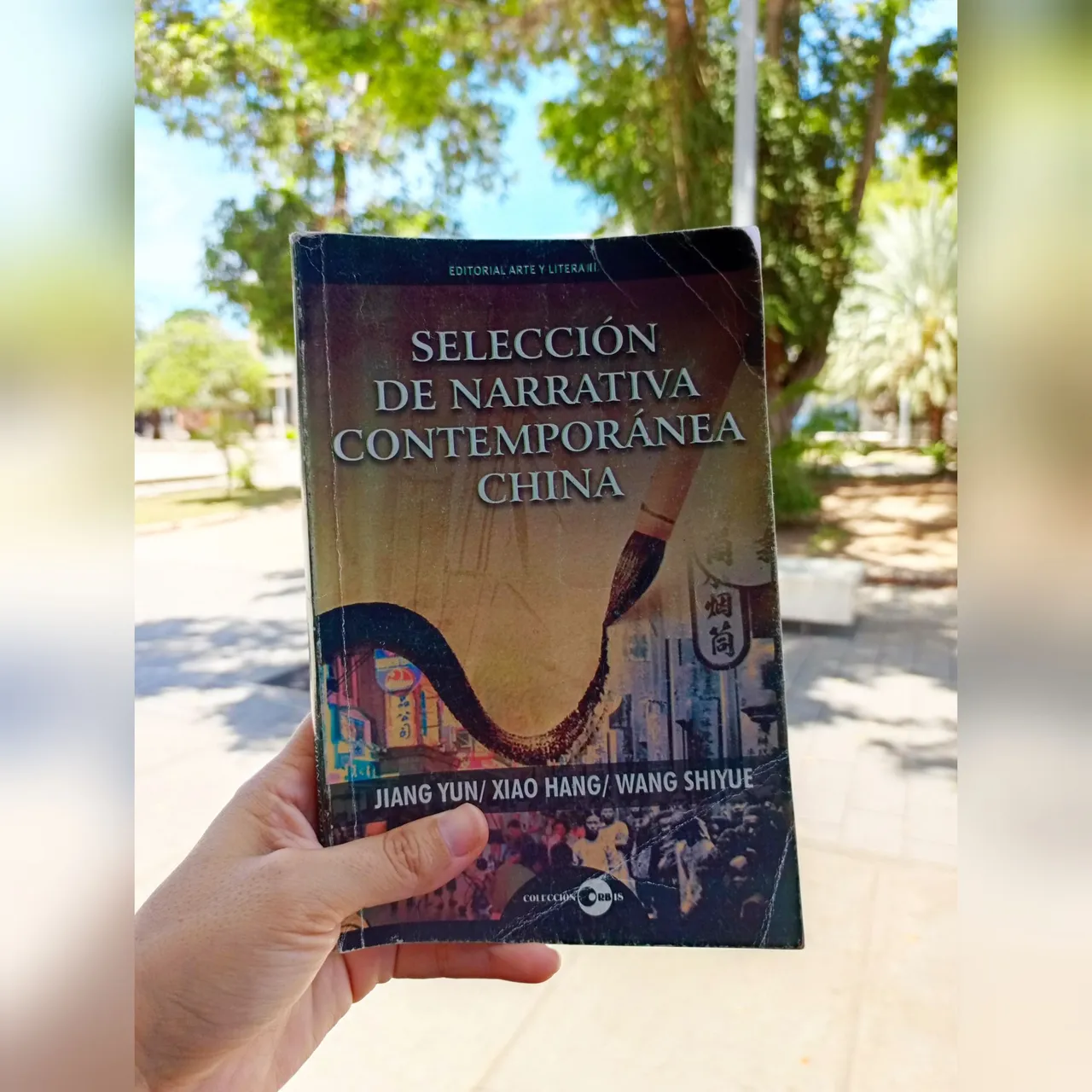Today I will approach the novel The Most Beloved Tree by the Chinese writer Jiang Yun, published in 2013. At the beginning of the reading we find a fragment of Noaa, Noaa, autobiographical work of the renowned French painter Paul Gauguin where he narrates one of his trips to Tahiti, where he marries a beautiful young woman, but two years later he abandons her and returns to France. Here appears for the first time the emblematic tree through which the plots will be woven, the man goes to enjoy its shade, while leaving his wife sad, sunk in loneliness and melancholy.
The novel owes its name to an acacia tree that appears in the story, as important as the characters, this tree is a faithful witness of the social and political changes of the Asian country in four decades, it also represents a refuge of peace and encounter with the roots. The tree is then presented as a symbol of transformation and resistance, silent witness of the past and present, until its imminent destruction.

This book describes with special mastery the culture, geography and most relevant historical events that occurred in China during four decades. In addition to what is expressed in the narrative, there are numerous footnotes, which give an account of Asian customs, as if they were inviting us to share this millenary culture. Thus we can realize that the war against the Japanese is set as a literary context, a conflict that influences the actions of the characters.
The narrative deals with Meiquiao's life from the time she is 16 years old, when she marries Mr. Da, a man who has been with her for almost 20 years. Each has different ambitions and purposes, a contrast that manifests itself in personality, economic status, degree of professionalization and experience, hence they fail to complement each other. She is a young dreamer who wants to be a teacher and artist, he, on the other hand, is a respectable man of strong character with a profession and good social status, by then he had more past than future.

The narrative voice takes care to give us many details about Meiquiao's personality in order to justify her behavior. In her projection, she wishes to be much more than a mother and housewife, her personal ambitions became a priority. She had four children with Mr. Da, but only showed affection for one of them, Lingxiang, her firstborn, since in her eyes she saw herself. Meiquiao suffered a deep depression when she realized that she had become something she did not want to be, so when the opportunity arose, she ran away with another man and abandoned her children.
As we continue reading, we see that Lingxiang is the one who takes the lead role. She grows up unhappy because of her mother's absence, which leads her to isolate herself from her family. However, when she reaches adolescence, she decides to undertake the adventure of looking for her, an objective she achieved after overcoming several setbacks, so she was able to get rid of the pain that oppressed her for eight years. Far from reproaching for the abandonment, she chose to forgive and close that chapter, preferring to let go of that emotional burden and face life with new perspectives.

The Most Beloved Tree is a work that explores the human condition and the complexity of existence during a long period of time in the midst of a conflictive environment. Love presents itself in the most unexpected places and in situations that could be considered immoral. I enjoyed reading it, although at times it is slow to insert many descriptions, as if the author was inviting us to contemplate the beauty of nature, instead of dedicating our existence to resolving conflicts, including a war that represented a radical change in Chinese culture.
Versión en Español
Hoy abordaré la novela El árbol más querido de la escritora china Jiang Yun, publicada en 2013. Al inicio de la lectura nos encontramos con un fragmento de Noaa, Noaa, obra autobiográfica del reconocido pintor francés Paul Gauguin donde narra uno de sus viajes a Tahití, allí contrae matrimonio con una hermosa joven, pero dos años después la abandona y regresa a Francia. Acá aparece por vez primera el emblemático árbol a través del cual se tejerán las tramas, el hombre se va a disfrutar de su sombra, mientras deja a su mujer triste, hundida en la soledad y la melancolía.
La novela debe su nombre a una acacia que aparece en la historia, tan importante como los personajes, este árbol es testigo fiel de los cambios sociales y políticos del país asiático en cuatro décadas, también representa un refugio de paz y encuentro con las raíces. El árbol es presentado entonces como un símbolo de transformación y resistencia, testigo silencioso del pasado y presente, hasta su inminente destrucción.

Este libro describe con especial maestría la cultura, geografía y sucesos históricos más relevantes que ocurrieron en China durante cuatro décadas. Además de lo expresado en la narración, hay numerosas notas a pie de página, las cuales dan cuenta de las costumbres asiáticas, como si nos invitaran a compartir esta milenaria cultura. Así podemos darnos cuenta que la guerra contra los japoneses se dispone como contexto literario, conflicto que influye en las acciones de los personajes.
La narrativa aborda la vida de Meiquiao desde que tiene 16 años, ella contrae matrimonio con el señor Da, un hombre que le lleva casi 20 años. Cada uno tiene ambiciones y propósitos distintos, contraste que se manifiesta en la personalidad, estatus económico, grado de profesionalizacion y experiencia, de allí que no logren complementarse. Ella es una joven soñadora que desea ser profesora y artista, él, en cambio, es un hombre respetable y de carácter fuerte con una profesión y de buen estatus social, para entonces tenía más pasado que futuro.

La voz narrativa se preocupa en darnos muchos detalles sobre la personalidad de Meiquiao, a fin de justificar su comportamiento. En su proyección, ella desea ser mucho más que una madre y ama de casa, sus ambiciones personales se transformaron en prioridad. Tuvo cuatro hijos con el señor Da, pero solo demostró cariño por uno de ellos, Lingxiang, su primogénita, puesto que en sus ojos se veía a sí misma. Meiquiao sufrió una profunda depresión al advertir que se había convertido en algo que no deseaba ser, por tal razón, cuando se le presenta la ocasión, escapa con otro hombre y abandona a sus hijos.
Cuando seguimos avanzando en la lectura, se observa que Lingxiang es quien asume el protagonismo. Ella crece infeliz por la ausencia de su madre, lo que la lleva aislarse de su familia. Sin embargo, cuando transita por la adolescencia, decide emprender la aventura de buscarla, objetivo que logró tras superar varios tropiezos, así que pudo sacar ese dolor que la oprimió durante ocho años. Lejos de reprochar por el abandono, optó por perdonar y cerrar ese capítulo, prefirió soltar esa carga emocional y afrontar la vida con nuevas perspectivas.
El árbol más querido es una obra que explora la condición humana y la complejidad de la existencia durante un buen lapso de tiempo en medio de un entorno conflictivo. El amor se presenta en los lugares más inesperados y, en situaciones, que pueden considerarse inmorales. Me agradó su lectura, aunque a ratos se hace lenta al insertar muchas descripciones, como si la autora nos invitara a contemplar la belleza de la naturaleza, en lugar de dedicar la existencia a resolver conflictos, incluyendo una guerra que representó un cambio radical en la cultura china.
✓Photos from my personal gallery, edited with Fotocollage.
✓Text translated with DeepL.
✓Fotos de mi galería personal, editadas con Fotocollage.
✓Texto traducido con DeepL.